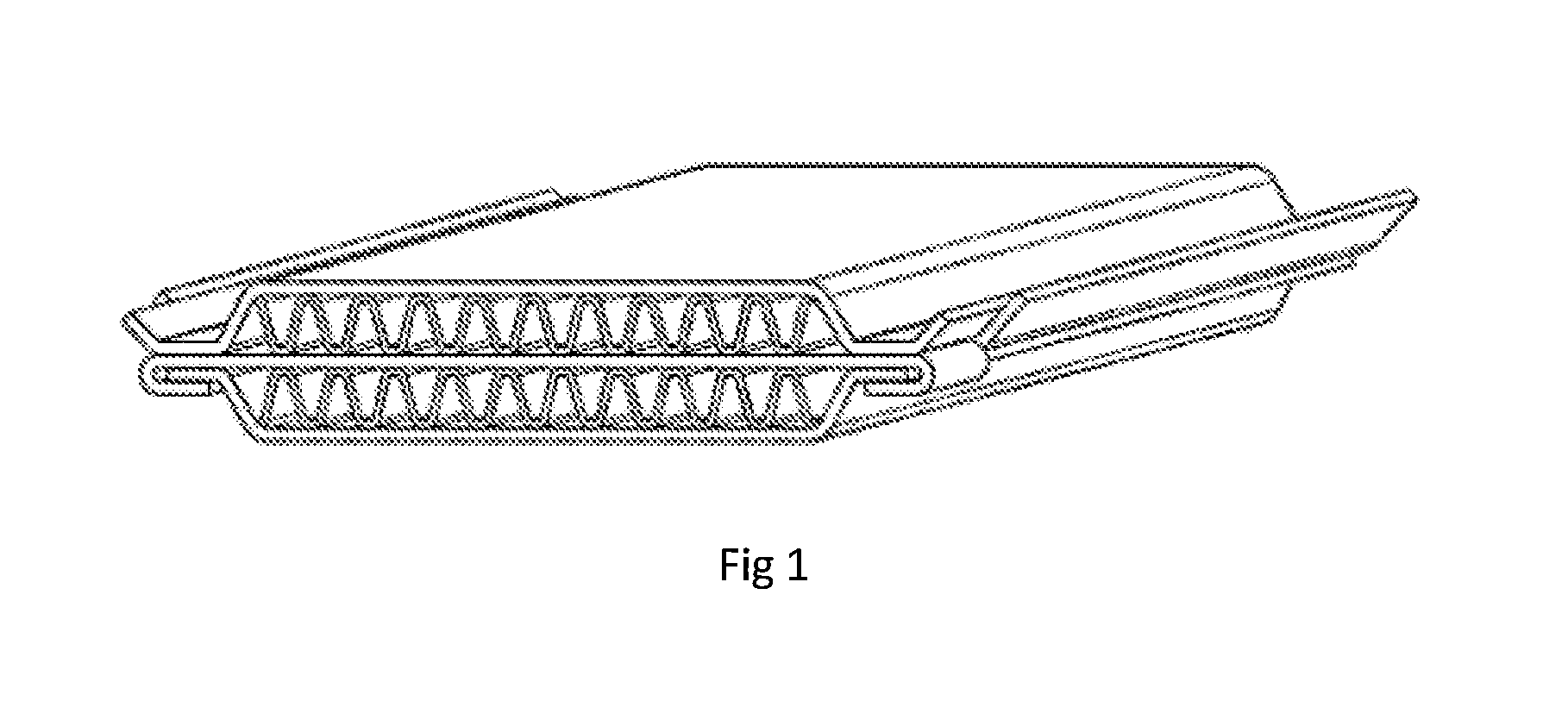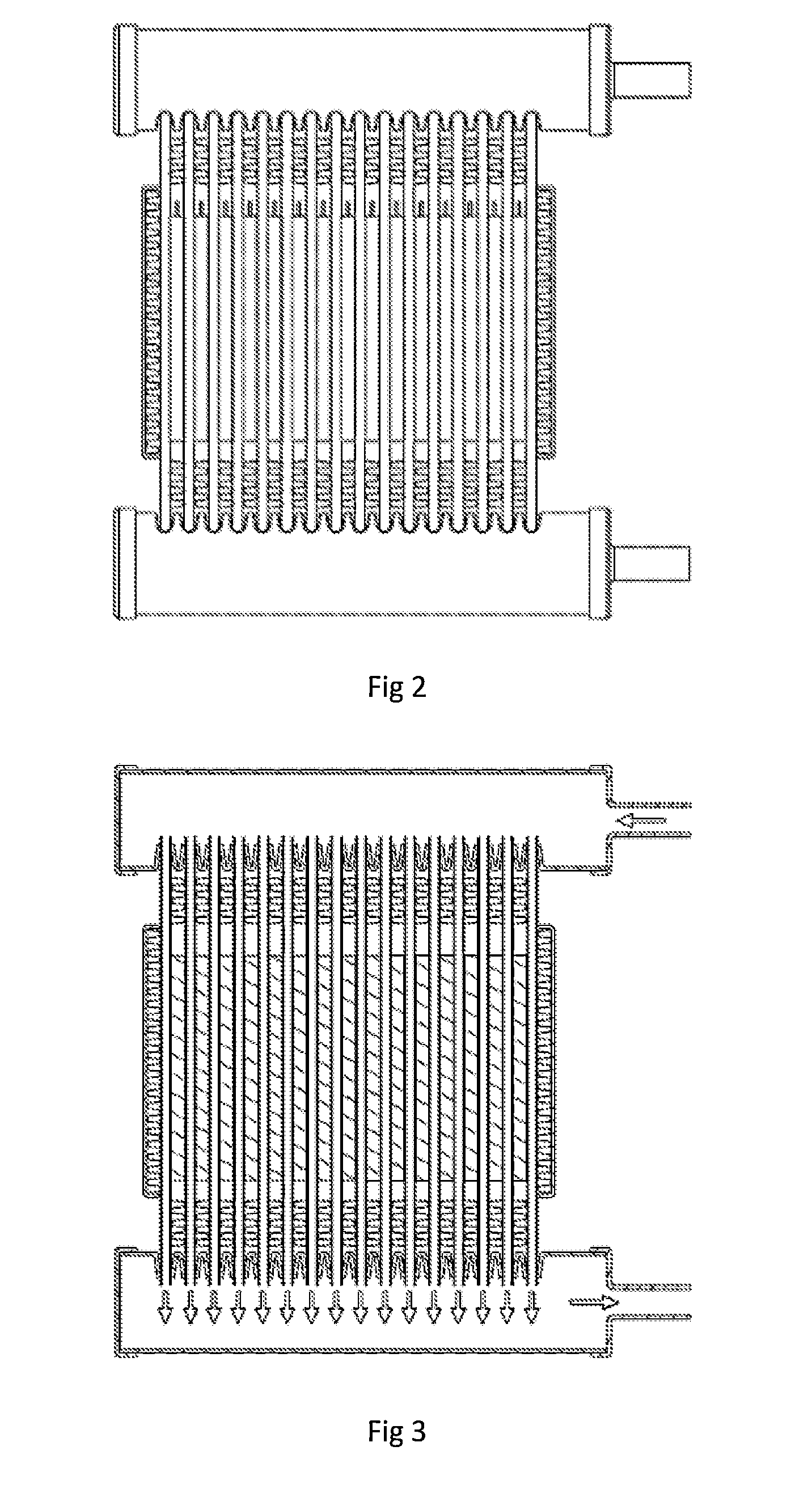Compact aluminium heat exchanger with welded tubes for power electronics and battery cooling
a technology of heat exchanger and welded tube, which is applied in the direction of manufacturing tools, electrochemical generators, lighting and heating apparatus, etc., can solve the problems of high internal pressure leakage risk, inflexible design, and increased cost involved in machining accurate micro-channels from flat aluminum workpiece plate material with the size and complexity of the required flow path, so as to achieve further improvement of heat exchanger performance and reduce weight
- Summary
- Abstract
- Description
- Claims
- Application Information
AI Technical Summary
Benefits of technology
Problems solved by technology
Method used
Image
Examples
Embodiment Construction
[0038]A so called heat sink module or a heat exchanger 20 as illustrated in FIG. 2, 3 is manufactured by assembling a number of flat tubes 3 manufactured from a metal sheet 11 by bending the sheet to a tubular form to form a sleeve, interconnecting the adjacent sheet edges by high frequency welding or any other suitable welding method forming a weld joint 12, the formed sleeve is pressed to form a flat cooling tube 3. Such flat welded cooling tubes 3 are particularly suitable and made for use into the heat exchanger 20 according to the invention. The heat exchanger 20 according to the invention is particularly suitable for thermal management of any heat radiating component s 5, 6 used in one of hybrid and electrical vehicle.
[0039]The weld joint (12) is preferably situated at the smaller dimension side 14, 14′ of the flat cooling tube 3 to minimize the leakage risks. The tubular component is pressed to approximate the flat tube shape of a bit larger size than a pre-formed fin insert ...
PUM
| Property | Measurement | Unit |
|---|---|---|
| Ra | aaaaa | aaaaa |
| thickness | aaaaa | aaaaa |
| thickness | aaaaa | aaaaa |
Abstract
Description
Claims
Application Information
 Login to View More
Login to View More - R&D
- Intellectual Property
- Life Sciences
- Materials
- Tech Scout
- Unparalleled Data Quality
- Higher Quality Content
- 60% Fewer Hallucinations
Browse by: Latest US Patents, China's latest patents, Technical Efficacy Thesaurus, Application Domain, Technology Topic, Popular Technical Reports.
© 2025 PatSnap. All rights reserved.Legal|Privacy policy|Modern Slavery Act Transparency Statement|Sitemap|About US| Contact US: help@patsnap.com



